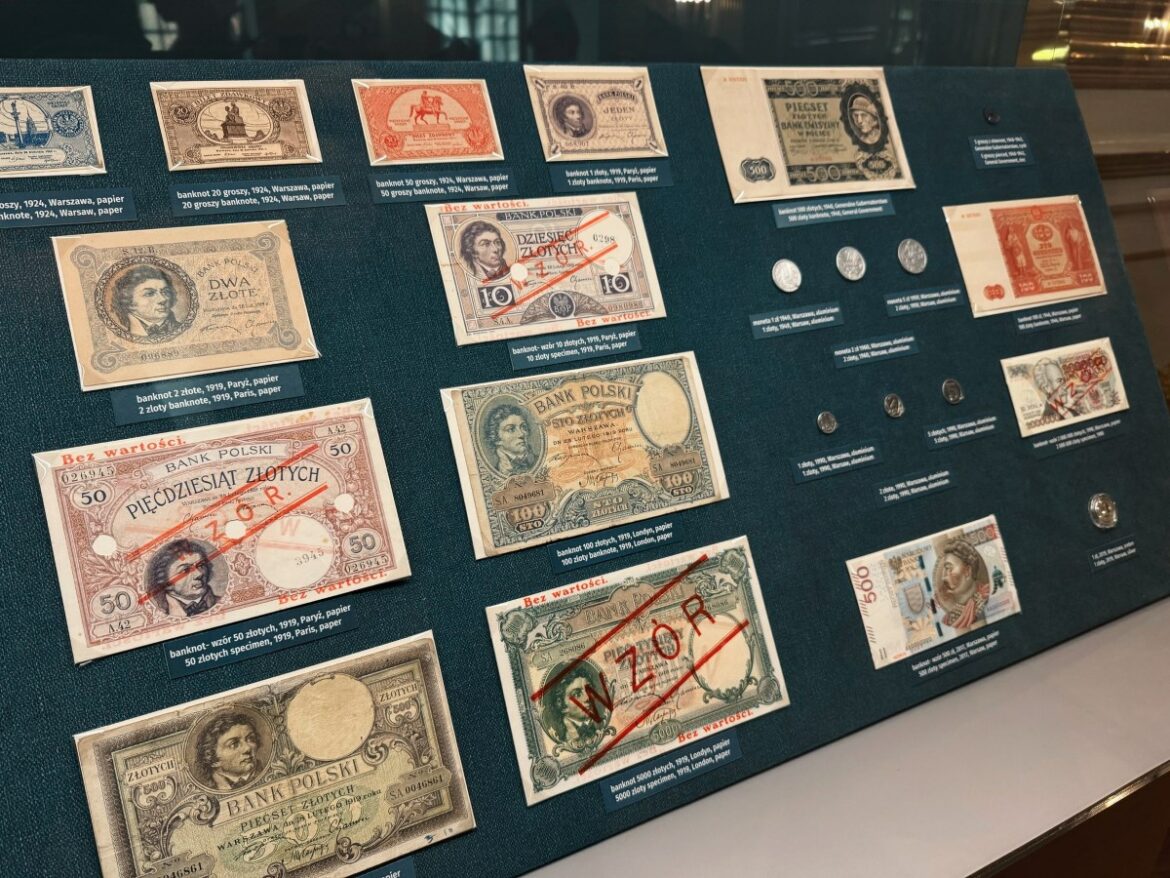A temporary exhibition titled “Centenary of Polish złoty 1924-2024” will be available at the Royal Castle in Warsaw in the Senator’s Room until April 20, 2024. “Centenary of Polish Zloty 1924-2024,” dedicated to the Polish Zloty and its history. The exhibition was organized on the occasion of the 100th anniversary of the introduction of a single currency in the Republic of Poland shortly after independence.
The history of the Polish zloty dates back to the end of the Middle Ages. In the 15th century, this was the name of the unit of account according to which sums in real silver coins of lower denominations were counted. It was equal to 30 groszes. Red zlotys, on the other hand, were gold coins – ducats, whose rate in silver coinage was floating, unequal to the Polish zloty.
“When Poland regained its independence in 1918, it was necessary to merge the three different administrative and currency systems previously in force in the various partitions. Initially, the Polish mark, which was introduced on December 9, 1916, in areas occupied by the German Empire, equivalent to 100 fenigs, was retained, but this devalued quickly after the war. As a result of rampant inflation, higher and higher denominations were needed – in 1923 banknotes of 10,000,000 marks were printed”, recalls the Royal Castle in Warsaw.
The necessary fiscal and currency reform was carried out in 1924 by then Prime Minister Władysław Grabski. In January 1924, the government issued a decree establishing the zloty as the new currency, with the Bank of Poland as its issuer. In March of that year, the issuance of marks ceased, and in April the minting of new coins and the printing of zloty banknotes began, preceded by earlier test issues. One zloty was equal to the Swiss franc. The State Mint was also established. The exchange of Polish marks into zlotys, at a ratio of 1,800,000 to 1, was carried out by the end of June 1924. Thanks to Władysław Grabski’s reforms, Poland’s economic situation was stabilized, and the Polish zloty was one of the most stable, fully convertible currencies until 1939.
Adrian Andrzejewski





